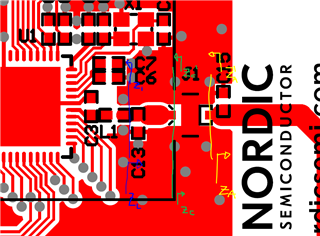I am working on my first nRF52832 design utilizing a 4 layer PCB. I have been reviewing the different antenna options for this device and have some questions about the PCB antenna solution. First, there are quite a few differences between the older development board (version 0.9) and the new recommended layout. Notably, the dev board has a microwave jumper on it (presumably for hooking up a network analyzer?). The latest reference design does not include this component but instead only shows the transmission line up to a 30x30 mil pad. The guidelines say that all components/pcb features must match to get optimal results. How does the addition of the jumper affect the impedance of the line? (note that I am no RF expert by any means). does the jumper connect by another length of trace to the 30x30 pad or can the jumper pad replace this? Also, for the PCB antenna, the guidelines show a "C15" 1.2 pF capacitor shunting the ANT net. If I use the microwave jumper, which side of the jumper should this capacitor be on? Thanks Rich



